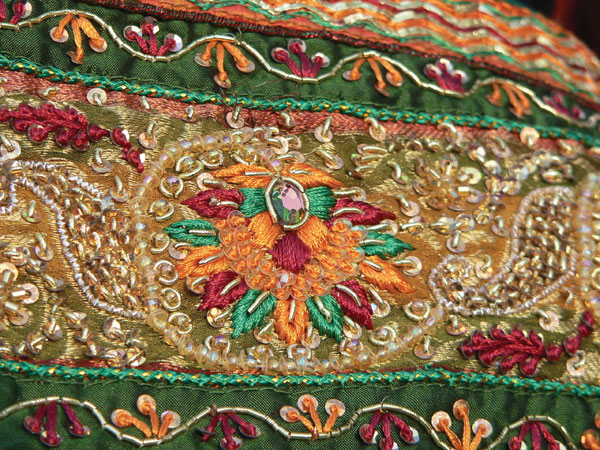
The ancient Indian weaving technique called zari provides Surface Enhanced Raman Spectroscopy with a platform for early detection of diseases like tuberculosis.
The centuries-old Indian weaving technique known as zari wraps flattened metal wires around silk fibres to create a shimmering brocade. This traditional textile provides chemistry professor Christa Brosseau of Saint Mary’s University in Nova Scotia with an elegant platform for the much newer technique known as Surface Enhanced Raman Spectroscopy (SERS). The combination should yield an innovative form of clothing that could report on whether the wearer has been exposed to any health threats or is showing early signs of disease.
As a vibrational form of spectroscopy, Raman provides only weak signals unless it can be performed on a metallic nanostructure such as gold or silver particles. If this material is embedded in fabric worn next to the skin, it could absorb an individual’s bodily fluids, such as sweat. A quick scan of this substrate could then reveal the vibrational signature of biomarkers associated with particular disease states. “You would have a fabric-based chip that could rapidly determine what is wrong with a patient,” says Brosseau, who was inspired by a collaboration with researchers in India looking at microfluidic chips built within fabric that could indicate the presence of a disease such as tuberculosis. The project was supported by Grand Challenges Canada, a federal program dedicated to improving health in low- and middle-income countries.
Although microfluidics is not her area of specialty, Brosseau has spent much of her career working with surface-enhanced Raman spectroscopy. She concluded that this approach would be ideally suited to the detection of plasmonic substrates built on the age-old design principles behind zari weaving. “The fabric is already metallic,” she says. “I could simply modify it, create some nanoscale features and you would have a SERS-based fabric sensor.” Brosseau and her team were able to demonstrate excellent and reproducible SERS enhancements on these fabric-based plasmonic substrates.
The next phase of this project will include surface modification of the nanostructured metal to monitor for specific target biomarkers. In principle, indicators could be obtained for a wide set of conditions, ranging from phthalate exposure in infants to urinary tract infections in nursing home residents. The next hurdle will be pinning down the respective biomarkers that SERS will find in order to confirm the presence of each condition.
